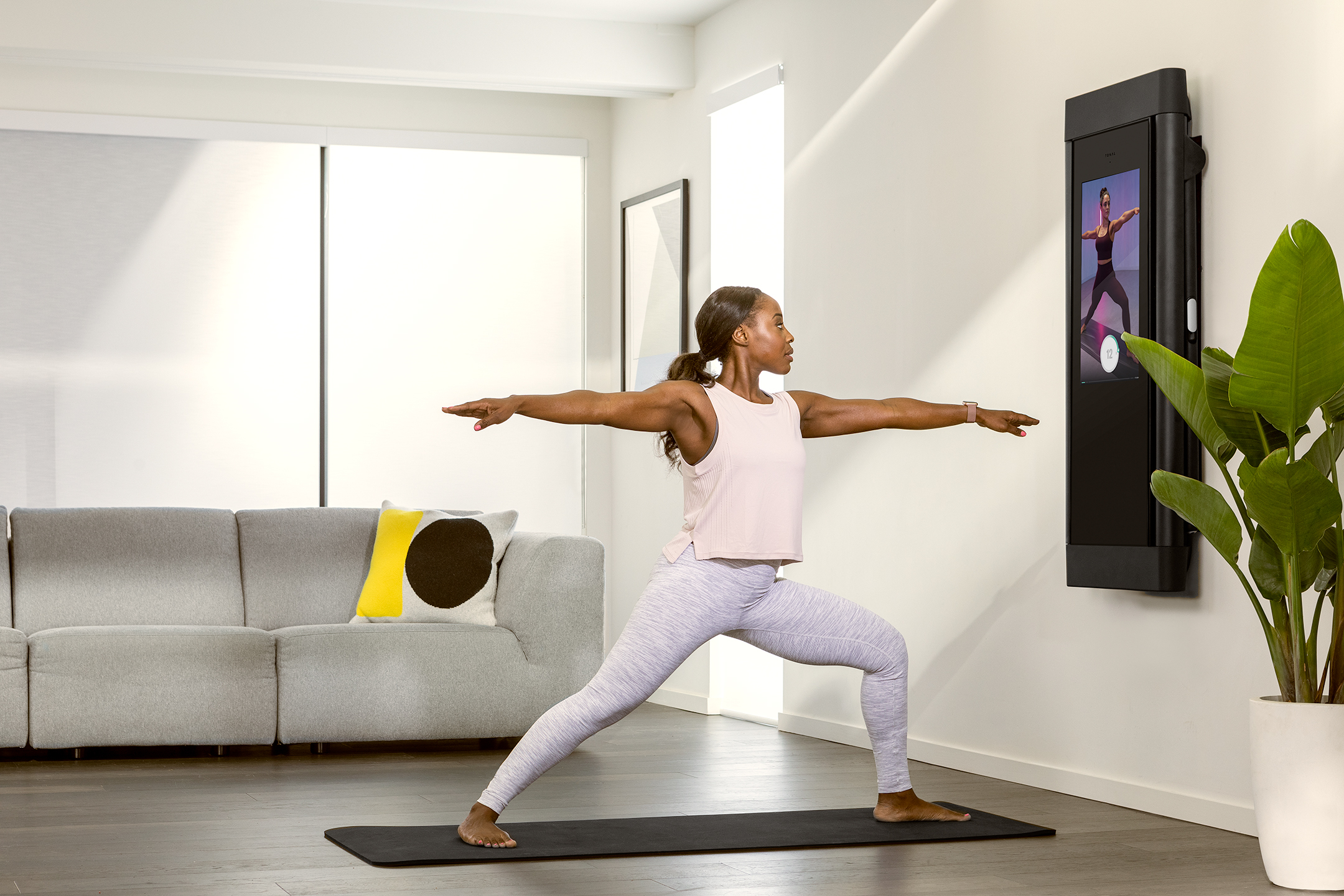Is the At-Home Fitness Bubble Going to Burst?

Analysts discuss how long the At-Home Fitness industry can sustain such a large increase in growth
The COVID-19 virus claimed its first American life in January, and to date more than 170,000 Americans have died from the virus while more than 5 million have been infected. As a result schools, bars, restaurants, and virtually every other place where people congregate in large numbers have either closed intermittently or altogether. Education has moved from the classroom to the living room, and office work now only requires a laptop, a couch, and a Zoom connection.
Closed gyms and beaches have caused workouts to become home-based as well, leading to an at-home fitness bubble. “It’s been massive,” says John Blackledge,managing director and senior research analyst at Cowen Investment Management LLC. “People are concerned about going back into a gym, so it’s just huge for at-home fitness.”
The surge in sales causing the at-home-fitness bubble seems to be happening at every price point, from high-end equipment to the most basic fitness hardware. “It’s still difficult to get a set of dumbbells in the country,” says Jon Canarick, partner at North Castle Partners private equity firm. “They sell out very fast when stores get them back in stock.”
This increased demand has caused a lot of money to change hands in the industry lately. Peloton stock has jumped 150% to date and venture capital dollars have been rolling in as well. Hydrow, which sells $2,000 rowing machines, experienced a 400% increase in sales during the pandemic and recently received more than $25 million in backing. The extra boost brings the company’s total capital raised to $52 million. Streaming and app-based businesses, like Playbook and BurnAlong, have raised $3 million and $4 million respectively. Tempo, a chief competitor of at-home fitness company Mirror, has raised $60 million.
But perhaps the biggest headlines were generated by Lululemon’s acquisition of Mirror for $500 million. If you’re wondering why Mirror would sell its place in the market during a time of such huge growth and when Peloton is valued at over-the-moon prices, you’re not alone. Canarick put the whole issue into perspective very nicely. “Five hundred million dollars is a lot of money,” he says, “It’s a life-changing amount of money for the shareholders. It’s a great return on their investment [and] Lululemon adds a ton of value.” He also notes that since Mirror is essentially a streaming fitness class, it competes with customers’ laptops and televisions. “[Mirror] is cool. It’s very cool,” says Canarick. “I have only good things to say about it [but] it’s definitely competing with every streaming option out there.”
Bursting At-Home Fitness Bubble
This begs the question about how long the industry can sustain such a large increase in growth. How much home fitness equipment and how many workout subscriptions is the average person willing to buy? Considering the fact that connected fitness companies, like Mirror and Peloton, charge customers for both the hardware as well as a monthly subscription fee, they could conceivably receive a “big slam to the bottom line” if there were a sudden drop off in subscriptions, says Canarick.
But for the most part it doesn’t look like the at-home fitness bubble will be bursting anytime soon. “Anything that looks flat relative to 2020 would be great,” says Canarick. “As an industry if we’re selling as many dollars worth of hardware in 2021 as we are in 2020, that’s far from the bubble bursting; but the breakneck growth can’t possibly be sustained. Nothing can grow at these levels.”
He maintains that 2021 hardware sales may not look like 2019, (which was still a good year), but that the industry will sustain volumes that are similar to 2020 depending on the size of the company. “The longer this goes on [closed gyms] the more people will want the at-home workout experience,” he says.
Michael O’Koomian, managing director and founder at MOK Capital Advisors, suspects that if gyms and fitness studios reopen by spring/summer 2021 and the public is comfortable going back to the gym, the restored competition is expected to cause the connected fitness market to simmer down a little. “And of course, when you compare year-over-year revenue or profit growth rates, they will be down regardless because of the huge COVID surge,” he says.
The Future
None knows when the pandemic will end and some semblance of normalcy will resume on this planet, but Canarick believes that there will be more mergers and acquisition deals in the future as the at-home fitness market becomes overcrowded. “Some will grow and maybe eventually get acquired; many will flame out and fail,” he says. If there are M&A deals to be done it will most likely be coming from the top down rather than smaller companies merging with other small companies. Smaller businesses simply can’t afford to merge and they also have a desire to maintain their own brand identity, he says.
Canarick also believes that the sale of Mirror does not represent a forthcoming quick-exit trend on the part of at-home fitness brands. “I don’t think [selling an at-home fitness brand] is driven by a bubble-bursting kind of mentality,” he says. “I also think that a lot of people think that this is a sustainable, long-term move toward home fitness.”
Experts also believe that when COVID is at last a distant memory that there will be a palpable movement in the fitness industry; and that consumers will split shifts between their new at-home fitness purchases and going to the gym.
O’Koomian believes that the number of influencers with fitness platforms will help keep millennials invested in at-home workouts, while good, old-fashioned accountability will keep them returning to the gym. “Accountability is a big word in fitness,” says O’Koomian. “You can’t [always] be accountable to your app.”
But with brick and mortar gyms, like 24 Hour Fitness and Gold’s Gym, declaring bankruptcy, what types of fitness centers will consumers be returning to? Canarick believes that gyms will look largely the same post-COVID, but there will be fewer of them, while Blackledge believes that consumers may see “COVID retro-fitted” gyms in the future, with available outdoor classes. But he maintains that the outdoor concept might not be sustainable (e.g. NYC outdoor classes in February or Phoenix, Ariz., outdoor classes in August).
Blackledge isn’t sure what the permanent damage to the out-of-home gym industry will be when COVID is no longer a threat. But what we know for now is that people are more willing than ever to spend money in order to get their at-homes gyms in good shape, and they’re going to continue doing so for a while. “We think demand will be very strong for many more quarters to come…probably until we get a vaccine that actually works,” he says.



